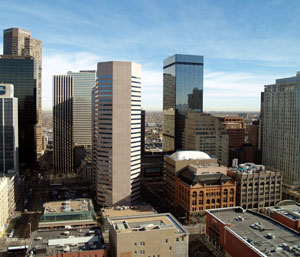Correction appended September 10, 2009
Denver’s 639-page zoning code, written in the 1950s and amended countless times since, is getting an overhaul. Gone will be arcane zoning terms like R-1 and B-2, replaced by specific guidelines and illustrations describing what new buildings should actually look like. And instead of the old code’s one-size-fits-all approach, the new rules could vary neighborhood to neighborhood.

Unveiled in May at a series of public meetings, the proposed new code is an attempt to better manage growth in a city that’s seen hundreds of older homes torn down in recent years and replaced by much-larger—critics say inappropriate—houses, explains Peter Park, Denver’s manager of community planning and development. The new code won’t prevent teardowns, but it will establish guidelines to ensure that new construction fits in better with a given neighborhood’s historic context.
“The new zoning code will be a vast improvement over what we currently have,” says Denver city council member Chris Nevitt, who represents several older neighborhoods where residents have battled with developers over teardowns and redevelopment. “I think it will be a model for the rest of the nation.”
Under the proposed new code, which employs a “form-based” approach, the city will be divided into seven types of districts: suburban, urban, urban edge, general urban, urban center, downtown, and special context. Different zoning rules will apply within those districts. For example, a new one-story ranch house in one of Denver’s 1950s suburban neighborhoods might be considered inappropriate in a 1920s neighborhood dominated by bungalows and Denver Squares.
In some cases, however, the new code would loosen restrictions. For instance, it might permit accessory dwelling units, or carriage houses, in some neighborhoods; under the current code, carriage houses are not permitted. “I think it will allow for more options for architects and their clients,” says Steven Carr, president of AIA Denver, which has endorsed the proposed code. “And it will make residents happier. They’ll have more choices about what they can do in their neighborhoods, but those choices will be based on specific contexts.”
The starting point for the new code was Blueprint Denver, a 2002 integrated land-use and transportation plan that divided the city into areas of stability—older neighborhoods where character should be preserved as much as possible—and areas of change—where new development is encouraged. But the 1950s code, says city planner Tina Axelrad, doesn’t make such distinctions, resulting in tremendous development pressure on Denver’s older neighborhoods. “We’ve got this huge mismatch,” she says.
The code is the product of a 16-member task force appointed by Denver mayor John Hickenlooper in 2005. Denver city council members will vote on a final version later this year.
Denver isn’t the only city moving away from traditional zoning codes, which tend to regulate how buildings are used, but not what they look like. Miami has been working a new form-based code called, Miami 21; planners in Nashville have developed a form-based code for the city’s downtown area.
Form-based zoning, says Carol Wyant, executive director of the Form-Based Codes Institute, is “a response to people wanting a sense of place, and being upset at the loss of a sense of place that’s occurred as historic neighborhoods have been torn apart building by building.”
Correction: The original story referred to the Form-Based Zoning Institute. The correct name of the organization is the Form-Based Codes Institute.

